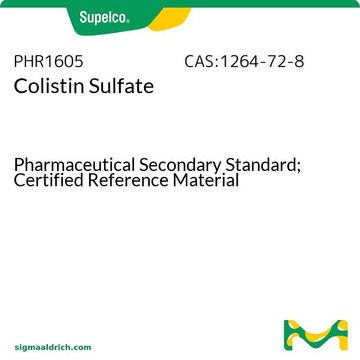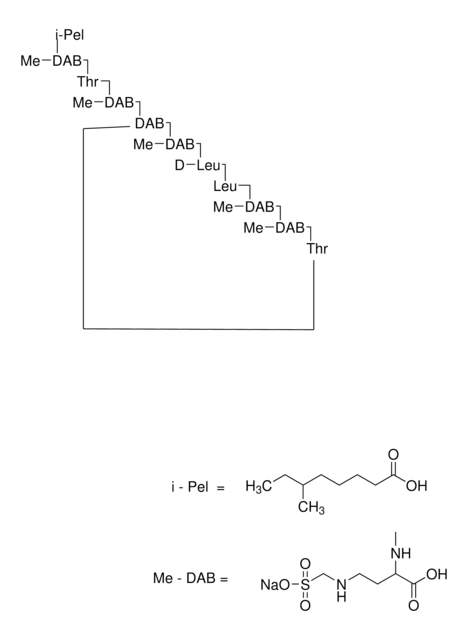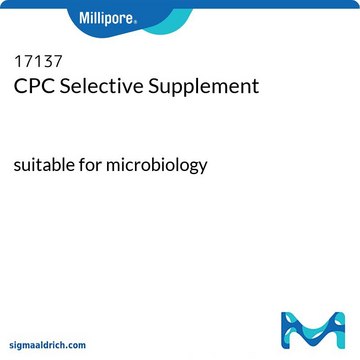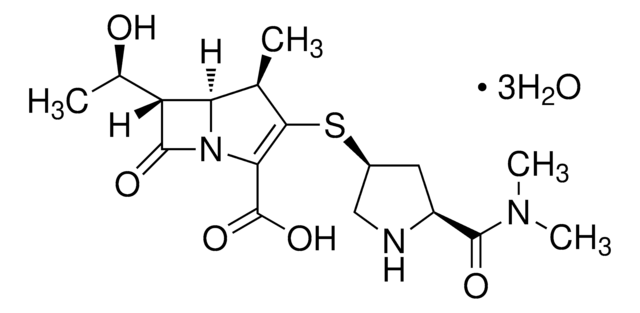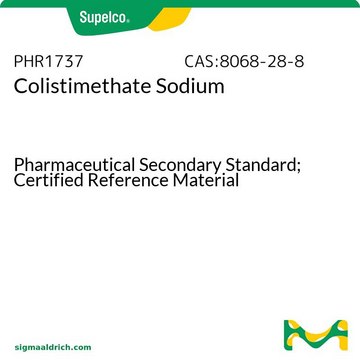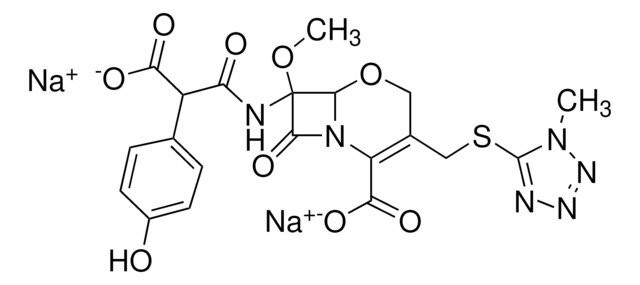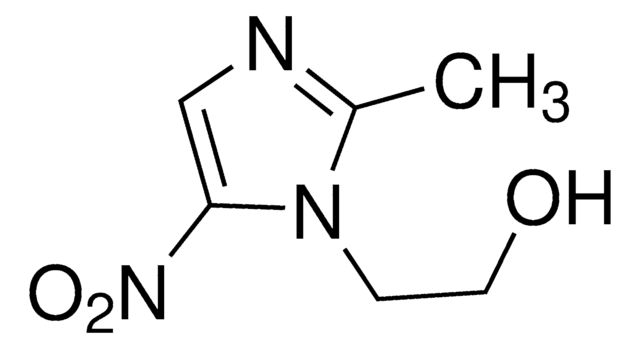C4461
Colistin sulfate salt
≥19,000 IU/mg
Synonym(s):
Polymyxin E
About This Item
Recommended Products
form
powder
Quality Level
specific activity
≥19,000 IU/mg
antibiotic activity spectrum
Gram-negative bacteria
mode of action
cell membrane | interferes
storage temp.
2-8°C
InChI
1S/C53H100N16O13.H2O4S/c1-9-30(6)12-10-11-13-41(72)60-33(14-20-54)48(77)69-43(32(8)71)53(82)65-36(17-23-57)45(74)64-38-19-25-59-52(81)42(31(7)70)68-49(78)37(18-24-58)62-44(73)34(15-21-55)63-50(79)39(26-28(2)3)67-51(80)40(27-29(4)5)66-46(75)35(16-22-56)61-47(38)76;1-5(2,3)4/h28-40,42-43,70-71H,9-27,54-58H2,1-8H3,(H,59,81)(H,60,72)(H,61,76)(H,62,73)(H,63,79)(H,64,74)(H,65,82)(H,66,75)(H,67,80)(H,68,78)(H,69,77);(H2,1,2,3,4)/t30?,31-,32-,33+,34+,35+,36+,37+,38+,39+,40-,42+,43+;/m1./s1
InChI key
ZJIWRHLZXQPFAD-LRYSGCCDSA-N
Looking for similar products? Visit Product Comparison Guide
General description
Application
Biochem/physiol Actions
Antimicrobial spectrum: Gram-negative bacteria.
Antimicrobial spectrum: Gram-negative bacteria. It is proposed that renal reabsorption of colistin may involve organic cation transporters and peptide transporters and that the process is sensitive to pH .
Analysis Note
Other Notes
Related product
signalword
Danger
hcodes
Hazard Classifications
Acute Tox. 3 Oral
Storage Class
6.1C - Combustible acute toxic Cat.3 / toxic compounds or compounds which causing chronic effects
wgk_germany
WGK 3
flash_point_f
Not applicable
flash_point_c
Not applicable
ppe
Eyeshields, Faceshields, Gloves, type P2 (EN 143) respirator cartridges
Certificates of Analysis (COA)
Search for Certificates of Analysis (COA) by entering the products Lot/Batch Number. Lot and Batch Numbers can be found on a product’s label following the words ‘Lot’ or ‘Batch’.
Already Own This Product?
Find documentation for the products that you have recently purchased in the Document Library.
Customers Also Viewed
Our team of scientists has experience in all areas of research including Life Science, Material Science, Chemical Synthesis, Chromatography, Analytical and many others.
Contact Technical Service